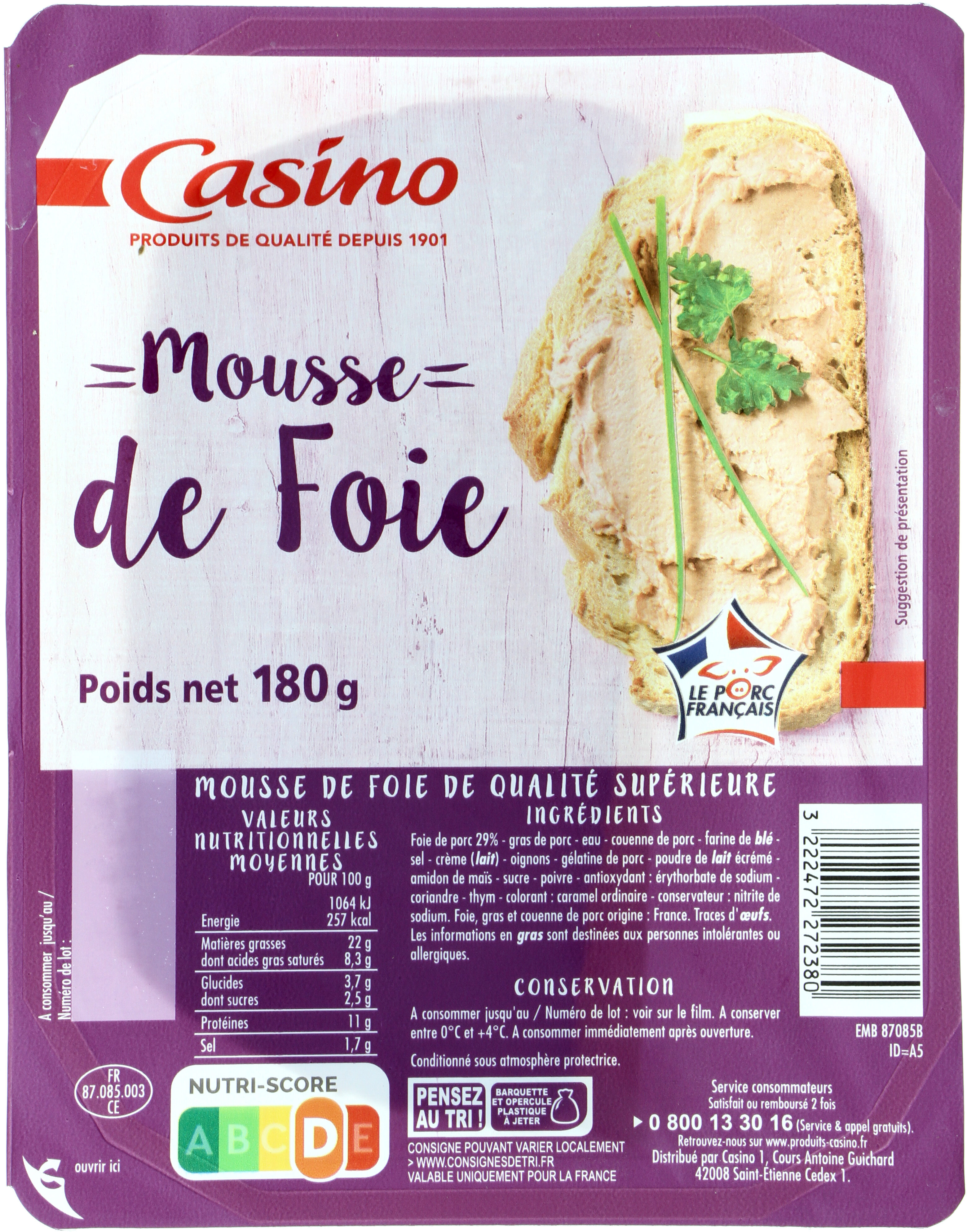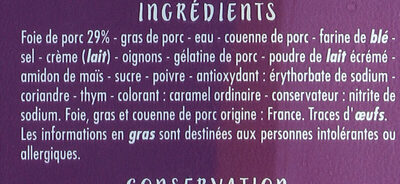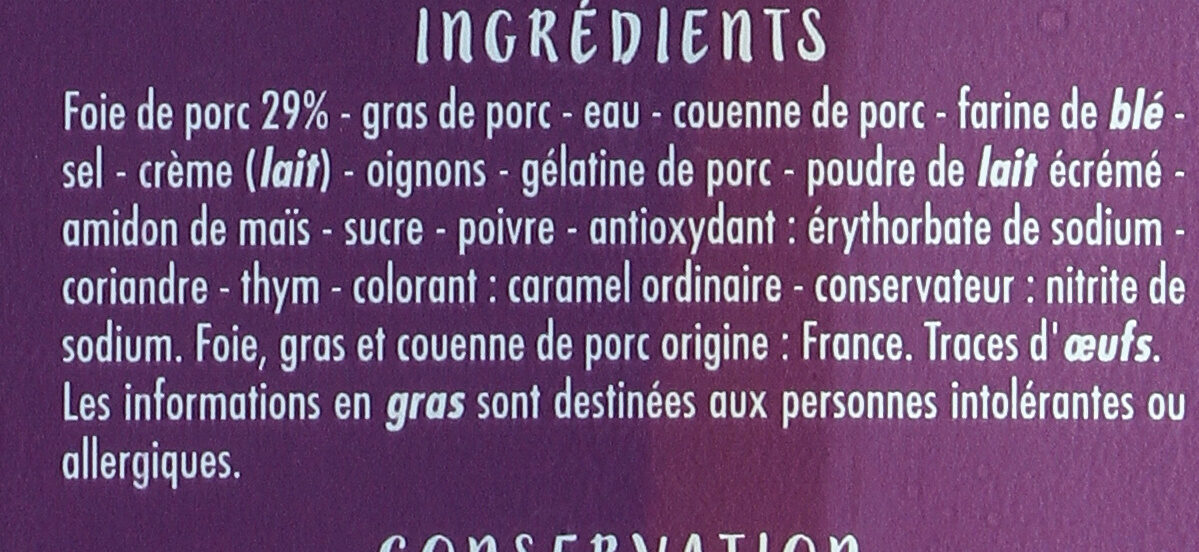Mousse de foie - Casino - 180 g
This product page is not complete. You can help to complete it by editing it and adding more data from the photos we have, or by taking more photos using the app for Android or iPhone/iPad. Thank you!
×
Some of the data for this product has been provided directly by the manufacturer casino.
Barcode: 3222472272380 (EAN / EAN-13)
Common name: Mousse de foie de qualité supérieure
Quantity: 180 g
Packaging: Film, fr:Opercule en plastique
Brands: Casino
Brand owner: Casino
Categories: Meats and their products, Spreads, Meats, Prepared meats, Salted spreads, Fish and meat and eggs, Foies gras, Savory mousses, fr:Mousses de foies
Labels, certifications, awards: French meat, French pork, Nutriscore, Nutriscore Grade D
Origin of the product and/or its ingredients: France
Origin of ingredients: France
Manufacturing or processing places: France
Traceability code: EMB 87085B - Limoges (Haute-Vienne, France), FR 87.085.003 CE - Limoges (Haute-Vienne, France)
Stores: Casino
Countries where sold: France
Matching with your preferences
Environment
Carbon footprint
Packaging
Transportation
Other information
Conservation conditions: A conserver entre 0°C et +4°C . A consommer immédiatement après ouverture.
Recycling instructions - To discard: barquette et opercule plastique
Report a problem
Data sources
Product added on by kiliweb
Last edit of product page on by yogoff.
Product page also edited by casino-off, danis1597, desan, openfoodfacts-contributors, org-casino, roboto-app, teolemon, yuka.DLJ7OsW0GsEsQPf1idxq4ALkG7fJOvhEJlQpog, yuka.sY2b0xO6T85zoF3NwEKvlhQfUPXXrRfUaC36gUay64u1cpbGQY5c7qzDDKs.








